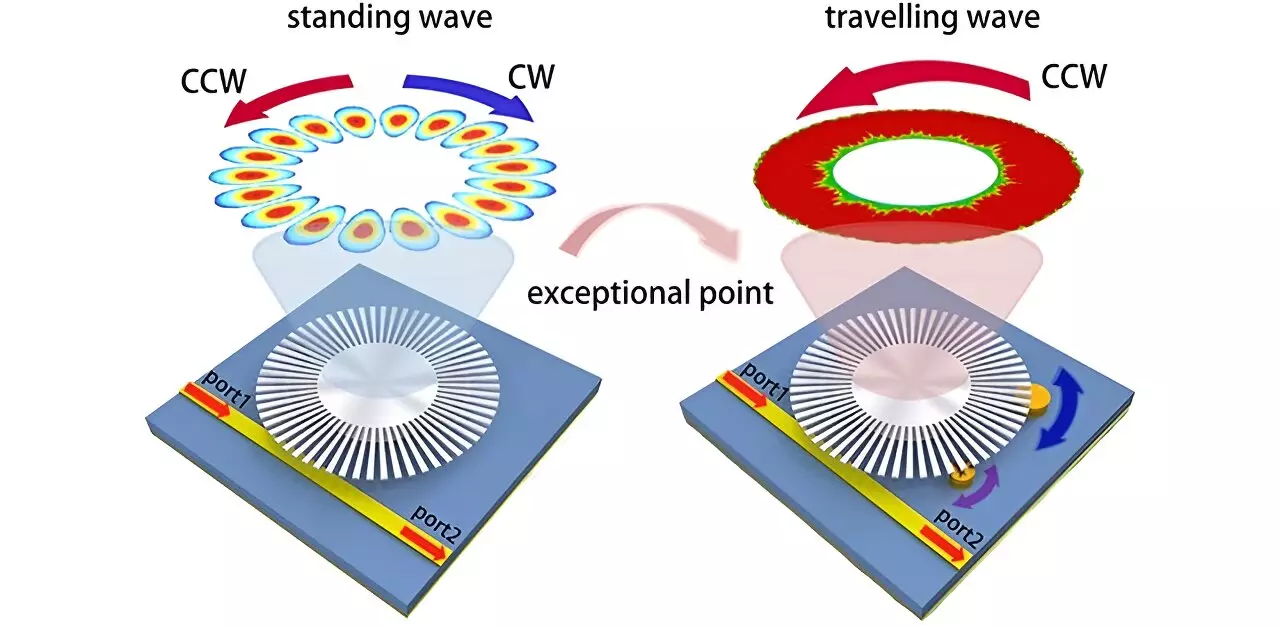In today’s rapidly evolving scientific landscape, sensor technology has experienced a remarkable transformation fueled by cutting-edge advancements in photonics and materials science. These emerging technologies have significantly enhanced the capabilities of sensors, allowing for the detection and measurement of properties with extreme precision and sensitivity. Among the notable trends in this field is the exploration of non-Hermitian physics, which presents groundbreaking opportunities for scientists and engineers alike. Recent findings published in *Advanced Photonics Nexus* have unveiled a groundbreaking sensor utilizing exceptional points (EPs), pointing toward a new horizon for measurement technology.
Exceptional points are a fascinating concept in the realm of physics, characterized as points where eigenvalues and their corresponding eigenvectors converge. This convergence facilitates a notable amplification in sensor sensitivity, a property that could revolutionize the detection of minute particles. Traditional sensor designs, including whispering gallery mode (WGM) microtoroids, have successfully used EPs to boost sensitivity. However, they come with inherent constraints, primarily related to the limited adaptability of their EPs post-manufacture and the narrow frequency ranges that limit their effectiveness in discerning very small particles.
The recent study proposes a novel sensor design that employs a single spoof localized surface plasmon (LSP) resonator, a device that mimics the nature of localized surface plasmons while introducing remarkable flexibility. By integrating movable Rayleigh scatterers within the sensor framework, researchers have enabled the dynamic reconfiguration of EP states. This dynamic capability ensures the sensor can operate effectively across a wide frequency range while providing robustness against typical fabrication flaws that often plague traditional sensors.
Key Features Elevating Sensor Performance
The newly conceptualized sensor presents several significant advancements over existing models. Firstly, the reconfigurability enabled by the adjustable Rayleigh scatterers allows for on-the-fly adjustments to EP configurations, significantly improving the overall precision and adaptability of the sensor. Furthermore, the design’s ability to confine electromagnetic fields to the resonator’s surface yields enhanced perturbation sensitivity, enabling the detection of particles smaller than the wavelength of light. Additionally, the sensor supports multipolar mode excitation, broadening its operational bandwidth and detection capabilities.
The implications of this advanced sensor technology are profound. This innovative design is not only capable of detecting particles as minuscule as 0.001 times the wavelength of light but also lays the groundwork for novel applications across various scientific and industrial fields. The advances in sensor sensitivity could facilitate breakthroughs in environmental monitoring, medical diagnostics, and materials science, among other areas. As researchers continue to refine and optimize these technologies, the future holds vast possibilities for enhancing our understanding of the microscopic world.
The integration of non-Hermitian physics into sensor design marks a significant milestone in scientific instrumentation, promising to push the boundaries of what can be detected and measured with astounding sensitivity.

